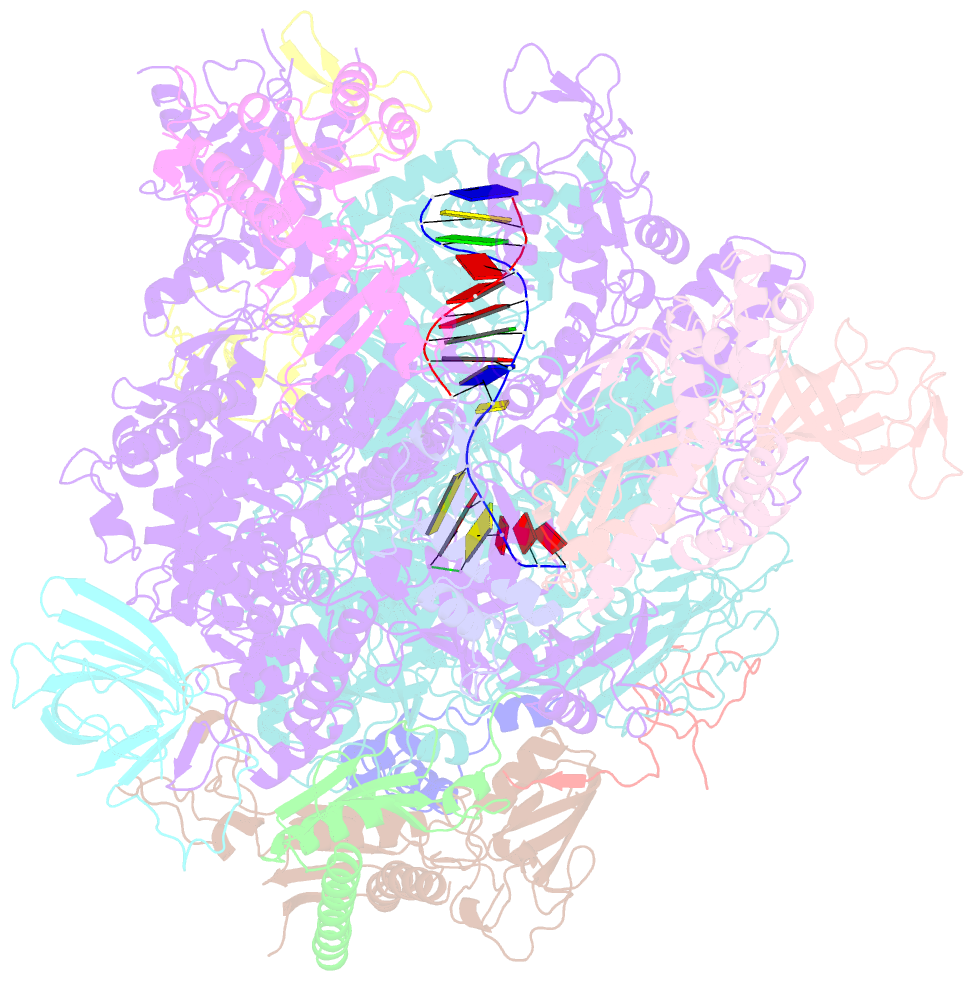Summary information and primary citation
- PDB-id
- 4a3j; SNAP-derived features in text and JSON formats;
DNAproDB
- Class
- transcription
- Method
- X-ray (3.7 Å)
- Summary
- RNA polymerase ii initial transcribing complex with a 2nt DNA-RNA hybrid and soaked with gmpcpp
- Reference
- Cheung ACM, Sainsbury S, Cramer P (2011): "Structural Basis of Initial RNA Polymerase II Transcription." Embo J., 30, 4755. doi: 10.1038/EMBOJ.2011.396.
- Abstract
- During transcription initiation by RNA polymerase (Pol) II, a transient open promoter complex (OC) is converted to an initially transcribing complex (ITC) containing short RNAs, and to a stable elongation complex (EC). We report structures of a Pol II-DNA complex mimicking part of the OC, and of complexes representing minimal ITCs with 2, 4, 5, 6, and 7 nucleotide (nt) RNAs, with and without a non-hydrolyzable nucleoside triphosphate (NTP) in the insertion site +1. The partial OC structure reveals that Pol II positions the melted template strand opposite the active site. The ITC-mimicking structures show that two invariant lysine residues anchor the 3'-proximal phosphate of short RNAs. Short DNA-RNA hybrids adopt a tilted conformation that excludes the +1 template nt from the active site. NTP binding induces complete DNA translocation and the standard hybrid conformation. Conserved NTP contacts indicate a universal mechanism of NTP selection. The essential residue Q1078 in the closed trigger loop binds the NTP 2'-OH group, explaining how the trigger loop couples catalysis to NTP selection, suppressing dNTP binding and DNA synthesis.





